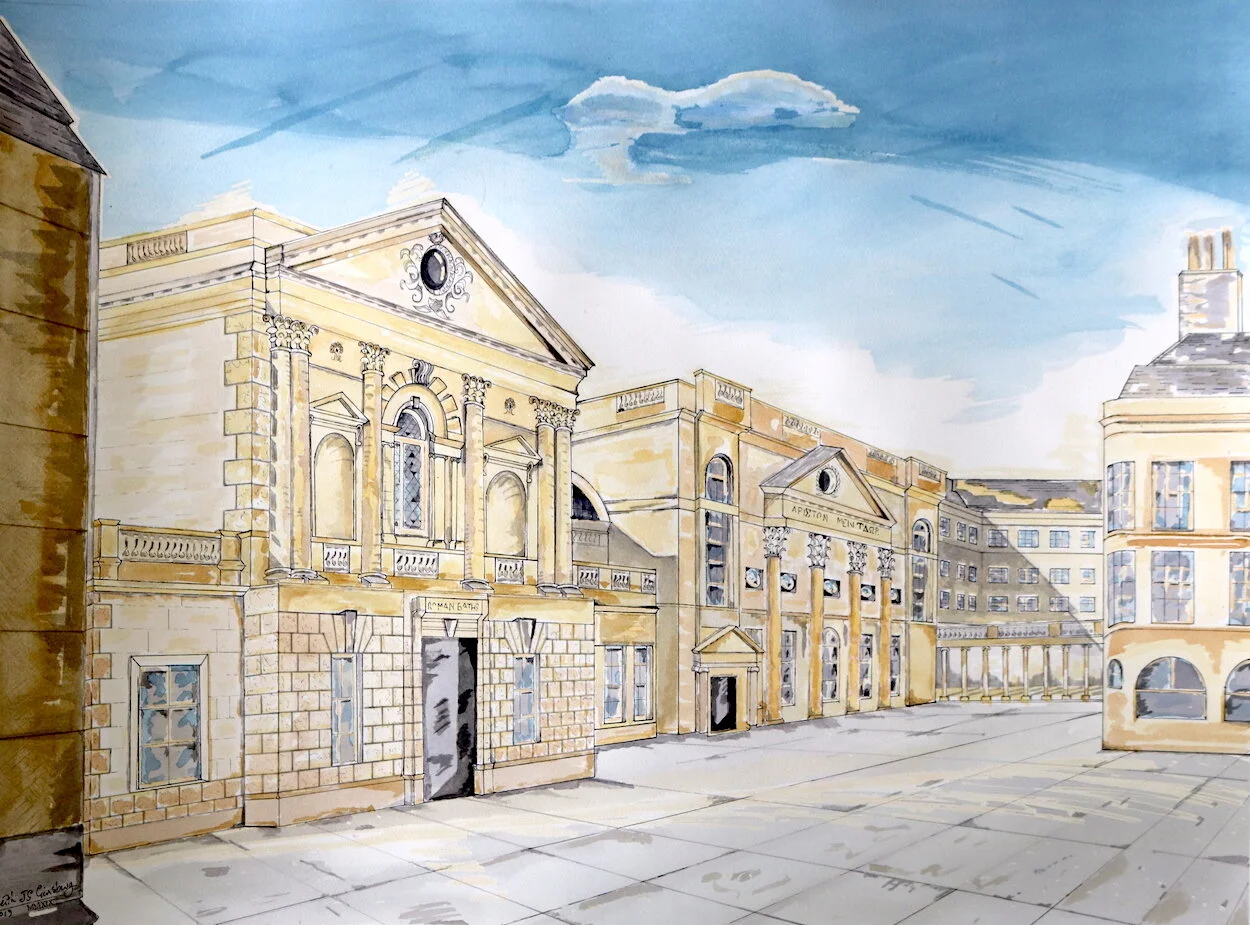A Romantic Vision
For my art, the classics will always be an influential reference point, a romantic vision, an idea of perfection, an ideal of form.
Last year, I painted a number of classical subjects, drawing my inspiration from the rich heritage of classical art, especially classical Greek statues and sometimes the later (but often inferior) Roman statues. To paint a 2D representation of a 3D image, especially one over 2000 years old, immediately presented me with two challenges. The first, was how to represent the form and the second was how to colour the image.
The Roman Baths at Bath
Colour In The Classical World
Each work is a combination of detailed observation of the original statue, plus painstaking desk research. Although what we often see today is a white marble statue, the German scientists Vinzenz Brinkmann and Ulrike Koch-Brinkmann researched the colours of ancient Greek sculptures as long ago as the 1980’s, and using a variety of scientific techniques available at the time proved that ancient Greek sculptures were often coloured.
However, more than 2000 years of weather has done its worst and worn out the brightness of the ancient marbles. But a few marbles kept indoors still retain some of their colour allowing for a modern representation of what the original may have looked like.
One can extrapolate from the values and status the ancient Greeks accorded to different colours. Gold, and other bright paints were considered the most appropriate for deities, enhancing their transcendent nature, whilst mortals used colour in a system of codes to represent their social status, so it is likely these were applied to colour statues and busts.
The Divine Hero, Heracles
Classical Literature
Additionally, classical literature reveals the physical description of heroes and gods, as well as their colouring and character.
In my painting of Alexander the Great I faced a number of challenges.
All primary images are gone but the best representation of Alexander is usually quoted as that of Lysippus. I used a combination of this, plus the Roman copy in Ny Carlsberg Glypotek, Copenhagen and the bust of Alexander the Great in the Capitoline Museum in Rome as my inspiration for the form.
For the colours, the Greek historian Arrian of Nicomedia described Alexander as: ‘strong, handsome commander with one eye dark as the night and one blue as the sky’. Others, however, believe this was an exaggeration. He is often described as having curly hair, lion-maned, or wearing a lion helmet. I painted his hair the colour of a lion’s mane, his eyes using cerulean pigment and gave him a fair complexion.
Alexander the Great
Classical References
By contrast, in the painting of Achilles and Patroclus, I represented Patroclus with a darker skin, and correspondingly darker hair.
For my representation of Hebe I used many classical references:
Nonnus, Dionysiaca 27. 241 ff : ‘Hebe with her lovely hair’
Philostratus the Elder, Imagines 2. 20 ‘Beautiful Hebe (Youth) . . . the youngest of the gods and the one most revered by them’
Pindar, Nemean Ode 10. 17 ff : ‘Hebe (Youth) fairest of all the goddesses’
Hebe is often described as gold shod, and her head as gleaming and flame haired, and her legs as ‘shapely ankled’. On vases she is often portrayed in a red colour. I used these descriptions as the basis of the treatment I applied to the damaged marble of Hebe that was my primary visual reference.
Hebe, Goddess of Youth
The Symbolic Significance Of Gold
For the Oceanid Hesione, I used part of the sculpture by Eduard Muller (Prometheus Bound and the Oceanids) from the National Gallery in Berlin, as my inspiration. I used 24 carat gold leaf to represent the rain, as Zeus, in the form of an eagle fights the nymph.
The application of gold leaf symbolises the era of classical richness, and honours and respects the divinity of the gods. On some paintings it is used as a base, anchoring the bust on a solid ground, in others the gold is fractured, mirroring the damage that time has wrought upon the ancient marbles.
The Oceanid, Hesione
These paintings, and others, can be viewed in more detail in the shop. This post was initially part of the commentary on the Classical Collection, but I have decided to remove those pages and transfer this to my blog. I hope you have enjoyed reading this, please like and share. Thank you.




